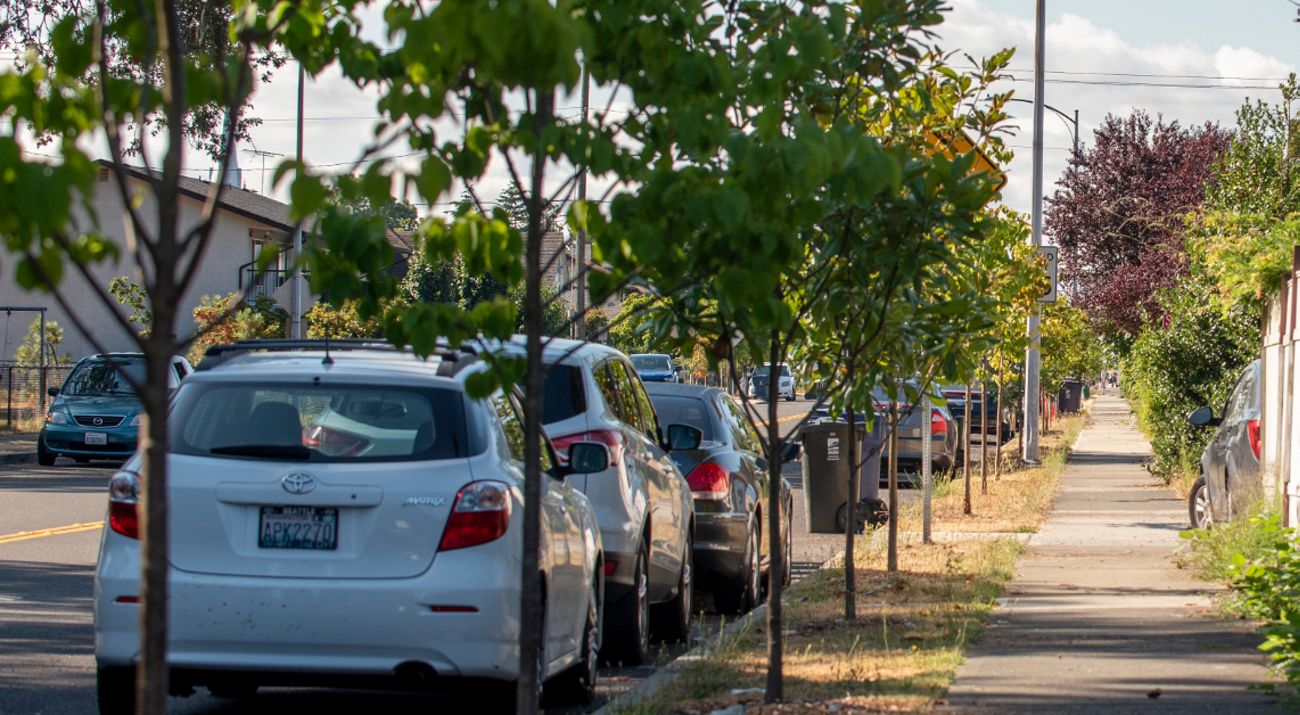Media Contacts
-
Emily Heber
Media Relations Manager
The Nature Conservancy
Phone: (661) 332-1652
Email: emily.heber@tnc.org
Greening initiatives and tree planting efforts in cities around the U.S. are bringing a variety of benefits to people through cleaner air, shade and climate change adaptation and mitigation. New research conducted in Tacoma, Washington builds on previous research, revealing that on a hyper-local scale every tree contributes to decreased air temperature.
Today, the journal Scientific Reports published the first study from the collaborative Greening Research in Tacoma (GRIT) initiative—a partnership between The Nature Conservancy in Washington, Environment & Well-being Lab at the University of Washington, Tacoma Tree Foundation and Tacoma Urban Forestry program, funded by an award from the Puget Sound Partnership. GRIT used a multi-disciplinary approach and community engagement to understand how tree coverage influences air temperature and how people experience heat in their immediate environment. Researchers found a linear relationship between tree cover and the surrounding air temperature, indicating there is no threshold tree canopy cover that must be overcome to begin seeing benefits at the local scale.
“Our goal is to better understand how people who live and work in a neighborhood with low tree canopy cover experience green infrastructure,” noted lead author Dr. Ailene Ettinger with The Nature Conservancy in Washington. “Finding that every additional tree can provide a cooling benefit on hot days is empowering news. It demonstrates the value of planting and maintaining healthy urban tree canopies in our neighborhoods as a way to bolster resilience to climate change within our communities.”
In recent years, heat waves in the Pacific Northwest revealed the real-world impacts of urban heat islands and low canopy coverage. In parts of Tacoma and elsewhere, low-income communities and communities of color often bear the brunt of extreme temperatures and heat-related health risks, which result, in part, from historic under-investment and discriminatory housing policies such as redlining. Building on previous studies which have analyzed city-wide or regional tree canopy, GRIT delivers insights at the scale of an individual neighborhood to better understand the lived experience of people. Researchers installed temperature monitors throughout the Tacoma Mall neighborhood to evaluate air temperatures before, during and after tree planting. The study found that even within the neighborhood, air temperatures varied widely (by 2.57 degrees Celsius [4.6 degrees F], on average, and up to 10 degrees Celsius [18 degrees F] at any given time); this is comparable to temperature variation reported previously across rural and urban environments.
For people living and working in cities, the temperature differences between areas with no or low versus adequate tree canopy coverage have important implications. For example, GRIT researchers compared their temperature data with Washington State’s Department of Labor & Industries Outdoor Heat Exposure rules, which help prevent heat-related illness and reduce traumatic injuries associated with heat exposure. They found that the probability of exceeding regulated high temperature thresholds was two to five times greater in areas with no tree canopy versus areas with trees within 10 meters (or just over 30 feet). Researchers also found discrepancies between temperature data in the study area and nearby weather stations, indicating communities are facing more extreme heat conditions than is widely reported. This suggests regional weather stations may not be representative of areas with a high degree of variability in tree canopy and temperature, which likely results in unequal protection from heat exposure by existing safety regulations. Together, these findings provide further support for increased investment in tree canopy cover as an essential nature-based solution for community well-being and adaptation to climate in light of the increasing frequency of extreme heat events.
“Washington’s cities have a lot of work to do when it comes to engaging with communities that are most vulnerable to heat-related illnesses and other environmental harms,” said Lowell Wyse, executive director of Tacoma Tree Foundation. “Involving community members in tree planting is a key strategy for creating neighborhoods that are healthier and fairer for everyone.”
GRIT builds on decades of research that show the importance of trees in our urban environments by focusing in on the local impacts of increasing tree canopy coverage for their natural benefits and the well-being of people. Through community engagement and collaborative science, this study highlights the significant role communities need to have in expanding green infrastructure to ensure lasting impacts. Ultimately, the study revealed that every tree planted to expand tree canopy coverage brings additional benefits by reducing the surrounding air temperature on hot summer days, increasing community resilience in the face of climate change and the growing risk of extreme heat events.
The Nature Conservancy is a global conservation organization dedicated to conserving the lands and waters on which all life depends. Guided by science, we create innovative, on-the-ground solutions to our world’s toughest challenges so that nature and people can thrive together. We are tackling climate change, conserving lands, waters and oceans at an unprecedented scale, providing food and water sustainably and helping make cities more resilient. The Nature Conservancy is working to make a lasting difference around the world in 81 countries and territories (40 by direct conservation impact and 41 through partners) through a collaborative approach that engages local communities, governments, the private sector, and other partners. To learn more, visit nature.org or follow @nature_press on X.
